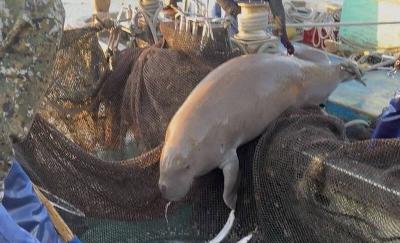Japanese consumers and businesses have been long known for their partiality to expensive, premium-grade homegrown rice, and rice farmers in Japan have been well protected by high tariffs on imports.
However, a small but growing number of them are rethinking their loyalty to such produce because of declining household incomes and fears about radiation contamination from last year’s Fukushima Dai-ichi nuclear power plant disaster, which occurred in one of Japan’s major rice-producing areas, according to a recent New York Times report.
More Japanese are now competing for the tiny amount of cheaper foreign alternatives that the Japanese government makes available to retailers, the report said.
Citing official Japanese records, the report said just 10,000 tonnes of imported rice were made available last year, a fraction of the average of 9 million tonnes of rice sold in Japan annually.
Since 1995, Japan has imported about 700,000 tonnes of rice tariff-free annually, most of which it diverts to uses that do not compete with Japanese rice, such as livestock feed and emergency stockpiles, the report said.
Meanwhile, a Council of Agriculture official has been quoted as saying by local media that Japanese grain importers managed to obtain a quota to buy 440 tonnes of rice from Taiwan last year, a new record since Taiwan resumed rice exports to Japan in October 2004.
Japanese grain traders have procured 1,500 to 2,000 tonnes of rice from central and southern Taiwan so far this year, business sources said, adding that Taiwan-grown rice has been sold to Japan at good prices.
For instance, a new rice strain dubbed “Kaohsiung 145” has been shipped to Japan at a price of US$1,600 per tonne, or about NT$48 per kilogram, higher than the NT$24 to NT$26 obtained in the domestic market.
Lin Ting-san (林定三), a Japan-accredited rice examiner, who has helped introduce Japanese rice traders to Taiwanese farmers, said Japanese importers had been searching for fine-quality rice in China, Thailand and several other places.
“Although rice alternatives from those places tended to be cheaper than Taiwan-grown varieties, their quality mostly fell short of expectations,” Lin said.
Major Japanese grain traders have therefore shifted their orders to Taiwan, he said.
Chen Yen-ching (陳燕卿), a Shennong Agriculture Award-winning rice farmer in Taoyuan County, said a Japanese rice trader purchased 80 tonnes of “Taiken 14” rice from the county in April this year.
“The texture and flavor of Taiken 14 are similar to premium Japanese-grown rice and suitable for household consumption,” Chen said, adding that the Taiken 14 rice has been sold in Japanese supermarket chains and other retail stores.
Chang Chih-chao (張智超), head of the Hualien County Government’s Agriculture Department, said a Japanese company has struck a deal with farmers in his county to purchase about 60 hectares of rice crops.
“Rice seedlings have been planted in several of our townships and villages,” Chang said.
Another Japanese food company, Kanematsu Co, has ordered 500 tonnes of Shangshui rice from Greater Tainan’s Houbi District (後壁), agricultural sources said.
About 80 tonnes of Shangshui rice was shipped to Japan in February after passing Japanese inspection, and the rest of the order should be delivered in late September, the sources said.
While Taiwan-grown rice has been well received in Japan, the New York Times report said whether there will be a significant push by Japanese consumers or businesses for more foreign rice is still uncertain.
The Japanese farming lobby, which has strong political clout, remains opposed to an opening-up, it added.
“Still, waning loyalties to homegrown rice could have immense implications for a country whose politics, society, economy and even national identity are entwined with rice cultivation,” the New York Times report said.

‘DENIAL DEFENSE’: The US would increase its military presence with uncrewed ships, and submarines, while boosting defense in the Indo-Pacific, a Pete Hegseth memo said The US is reorienting its military strategy to focus primarily on deterring a potential Chinese invasion of Taiwan, a memo signed by US Secretary of Defense Pete Hegseth showed. The memo also called on Taiwan to increase its defense spending. The document, known as the “Interim National Defense Strategic Guidance,” was distributed this month and detailed the national defense plans of US President Donald Trump’s administration, an article in the Washington Post said on Saturday. It outlines how the US can prepare for a potential war with China and defend itself from threats in the “near abroad,” including Greenland and the Panama

A wild live dugong was found in Taiwan for the first time in 88 years, after it was accidentally caught by a fisher’s net on Tuesday in Yilan County’s Fenniaolin (粉鳥林). This is the first sighting of the species in Taiwan since 1937, having already been considered “extinct” in the country and considered as “vulnerable” by the International Union for Conservation of Nature. A fisher surnamed Chen (陳) went to Fenniaolin to collect the fish in his netting, but instead caught a 3m long, 500kg dugong. The fisher released the animal back into the wild, not realizing it was an endangered species at

The Chinese Nationalist Party (KMT) is maintaining close ties with Beijing, the Democratic Progressive Party (DPP) said yesterday, hours after a new round of Chinese military drills in the Taiwan Strait began. Political parties in a democracy have a responsibility to be loyal to the nation and defend its sovereignty, DPP spokesman Justin Wu (吳崢) told a news conference in Taipei. His comments came hours after Beijing announced via Chinese state media that the Chinese People’s Liberation Army’s Eastern Theater Command was holding large-scale drills simulating a multi-pronged attack on Taiwan. Contrary to the KMT’s claims that it is staunchly anti-communist, KMT Deputy

The High Prosecutors’ Office yesterday withdrew an appeal against the acquittal of a former bank manager 22 years after his death, marking Taiwan’s first instance of prosecutors rendering posthumous justice to a wrongfully convicted defendant. Chu Ching-en (諸慶恩) — formerly a manager at the Taipei branch of BNP Paribas — was in 1999 accused by Weng Mao-chung (翁茂鍾), then-president of Chia Her Industrial Co, of forging a request for a fixed deposit of US$10 million by I-Hwa Industrial Co, a subsidiary of Chia Her, which was used as collateral. Chu was ruled not guilty in the first trial, but was found guilty